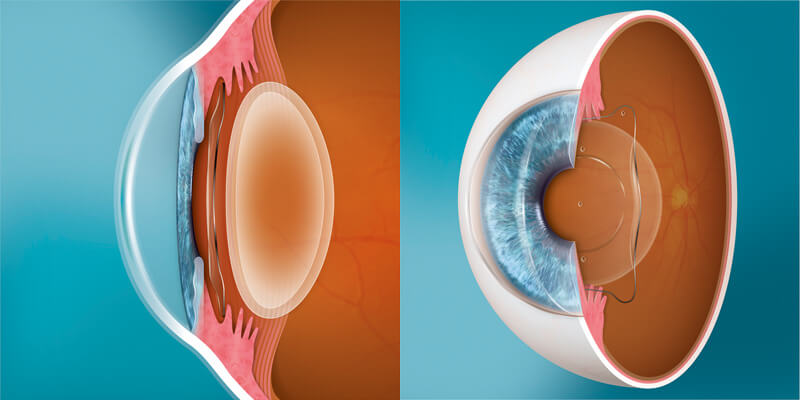What is the difference between ICL surgery and Clear Lens Exchange?
What is an ICL?
An Implantable Collamer Lens, also called the Implantable Contact Lens (ICL) is an extremely small and thin lens implanted inside the eye. The lens sits behind the iris and in front of the natural crystalline lens. ICLs are are surgically inserted into the eye where they provide excellent quality of vision with predictable and stable results.

What ICL implant options are available?
The ICL can corrected near-sightedness, far-sightedness, and astigmatism. The type of ICL that will be used is determined based on your particular refractive error and ocular anatomy. This is something that your optometrist and surgeon can advise you further on.
Professor Reinstein talks about the types of prescriptions that can be corrected with ICL surgery…

What is Clear Lens Exchange (CLE)?
As with ICLs, Clear Lens Exchange (CLE) can be used to correct almost any prescription. In CLE, your own internal crystalline lens is removed and a synthetic implant is placed inside the capsular bag that contained the natural lens. The lens is similar to an ICL, but it is placed inside the capsular bag, whereas an ICL is placed in front of the natural lens.
Because the natural lens is removed, and the implanted lens has a fixed focus, CLE also removes any remaining function of the eye’s ability to change focus. Therefore, an ICL is usually preferred when treating patients under the age of 65. In some patients with high far-sightedness there may not be enough space inside the eye to place an ICL, so CLE would be the only surgical option available for such patients.
What information is important to consider about lens surgery?
There are several inaccuracies in the information often provided to patients regarding CLE. The first is the often cited advantage that CLE provides permanent vision correction. While the change in refraction due to the procedure is permanent, the cornea reshapes continuously from the age of 40, and this change affects the prescription in about a third of all individuals, usually by changing the astigmatism. Therefore, it is possible for the refraction to shift slightly after CLE due to natural changes to the cornea.
Another proposed advantage of CLE is that it removes the need for future cataract surgery as the natural lens has been removed during the CLE procedure. This is as opposed to undergoing a corneal refractive laser procedure that leaves the natural lens intact, but cataract surgery may be required later in life. However, only 30% of individuals in the UK, a predominantly Anglo-Saxon population, actually go on to have visually significant cataracts that require surgery.
Therefore, the future possible need for cataract surgery should be weighed up against the comparatively higher risks of intraocular surgery, particularly for patients younger than 60. Although it is intuitive to most people that going inside the eye to replace a lens that is still transmitting light (not a cataract) is more invasive and less safe than performing a laser procedure on the surface of the eye, this point is often overlooked or minimized.
The last point to consider is evolving IOL technology. While the current IOL technology is very good and can provide a range of vision after surgery, there are still limitations that include, glare, halos, and decreased contrast sensitivity. As IOL technology improves, it is expected that new designs will evolve over time that decrease the side effects and provide a more natural range of vision.
In conclusion, CLE is a vision correction option for patients but must be discussed thoroughly and weighed against all other options. To find out more about correcting your vision or to book your consultation, get in touch with one of our friendly clinic coordinators today by calling 020 7224 1005.


